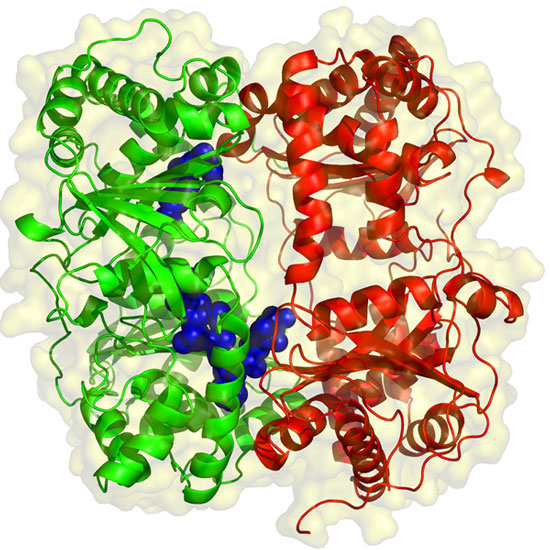Detecting enzymes that can absorb useful energy
Associate Professor Laszlo Kalman Department of Physics Concordia University (Canada) and colleagues have found a way to extend the energy storage time of an enzyme like pin in nature from a few seconds to several hours, help make better use of solar energy.
The study is published in the latest issue of the Journal of the American Chemical Society.

Researchers have discovered an enzyme in bacteria that plays an important role in solar energy absorption. Under the stimulation of light, inside this enzyme will appear a charge of separation of charge, causing one end to be negatively charged, the other to be positively charged, like a battery.
In nature, the energy generated will be consumed immediately, however, by adding different molecules to change the shape of the enzyme, the researchers extended the duration of the charge of the enzyme to make it available. can maintain longer than the state of charge separation.
In the future, such technologies could be used in medical treatment and the production of biocompatible batteries. Enzymes and batteries generated by other biological molecules can become devices to monitor in the body after surgery.
Biocompatible batteries do not contain toxic metals like traditional batteries, so it can be placed in the human body without danger.
- Successfully developed compounds that absorb CO2 faster than trees
- 8 ways to reduce liver enzymes simply can be done
- Brick walls can absorb light that creates energy
- The culprit causes an increase in liver enzymes
- High liver enzymes - close assassins
- Create electricity from scrap paper
- Future energy source from infrared rays
- Discover important plant enzymes
- Solar panels absorb all light energy
- Liver enzymes are high and how to reduce them without medication
- Detection of enzymes involved in early cancer
- Detecting algae can 'eat' cellulose
 Green tea cleans teeth better than mouthwash?
Green tea cleans teeth better than mouthwash? Death kiss: This is why you should not let anyone kiss your baby's lips
Death kiss: This is why you should not let anyone kiss your baby's lips What is salmonellosis?
What is salmonellosis? Caution should be exercised when using aloe vera through eating and drinking
Caution should be exercised when using aloe vera through eating and drinking